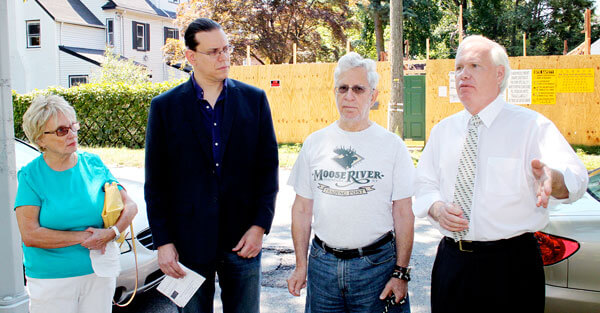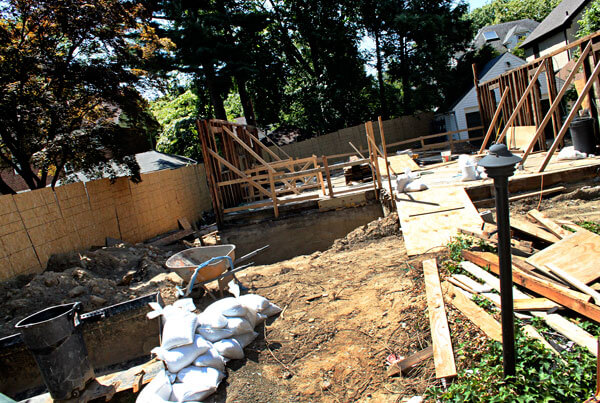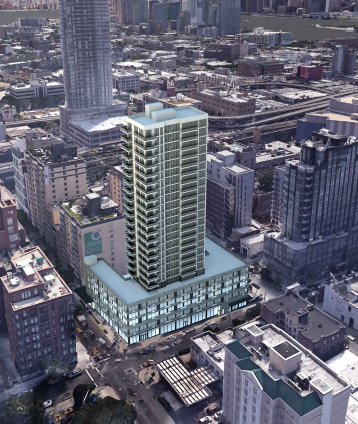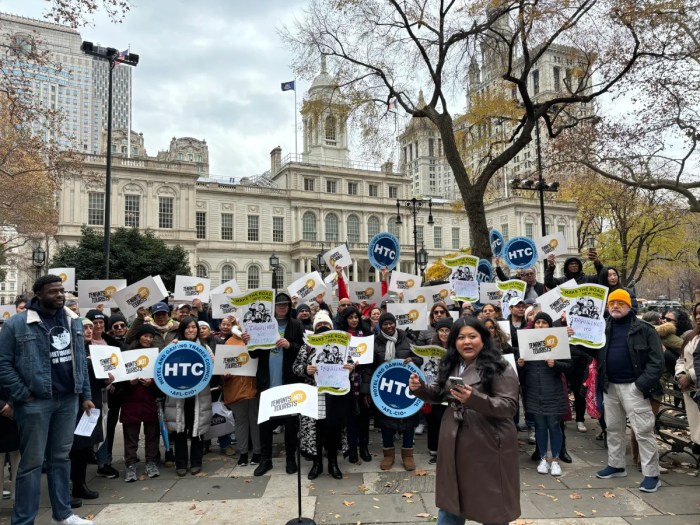By Joe Anuta
The city recently fined a Broadway-Flushing property owner nearly $10,000 after his workers filed permits to alter a house on a historic block — but ended up destroying most of the structure except for two walls.
Activist and urban planner Paul Graziano, who is running to replace City Councilman Dan Halloran (R-Whitestone), joined state Sen. Tony Avella (D-Bayside) and representatives of the Broadway Flushing Homeowners’ Association Tuesday outside the ruins of the one-family home that once stood at 156-10 32nd Ave.
“This was supposed to be an alteration, but as you can see, it’s been demolished,” said Graziano, who worked with members of the association to draw the city’s attention to the illegal activity.
In early July, Sandi Viviani, the association’s zoning chair, noticed workers at the address were putting up a construction fence and then tearing down portions of the house, she said at the news conference. City permits stipulated owner Jian Wen Zhu had permission to merely alter the home, not level it.
Inspectors visited the site after Viviani complained, but did not issue any fines, according to records from the city Department of Buildings, and so the destruction continued.
Within days more than 75 percent of the house was ripped down, according to Vivani, who alerted Graziano. The activist and Viviani then filed another complaint against the property owner.
The city ordered crews to stop working, records show, but when the contractor then violated that edict, inspectors slapped Zhu with a total of $9,800 in fines, according to the city.
“The initial fight has to be to hold this property owner, this developer, the architect and the contractor to the law,” Avella said.
When reached by phone, Zhu declined to comment.
Mel Siegel, past president of the association, said they can now only wait and see what will be built.
“I know what will go up here won’t be in character with the rest of the neighborhood,” he said.
Graziano had filed a formal objection to Zhu’s blueprints, charging the plan itself violated city regulations set for homes in the area — a charge completely separate from the other infractions. But he and the others said Tuesday the longterm solution is to take the burden off private homeowners and get the neighborhood landmarked.
Graziano penned the report that got Broadway Flushing into the national and state registers of historic places, but the area has been repeatedly rejected for landmark status by the city Landmarks Preservation Commission, he said.
Part of the neighborhood is governed by a private building code called the Rickert-Finlay covenant. The strict rules run with about 550 deeds in the area and are not in the city’s building code — meaning the association must defend the character of the neighborhood in court.
The group recently won a key court battle to enforce the restrictive covenant. Graziano prepared a lengthy report and offered what the association and judge cited as crucial testimony that ultimately prevented a property owner from dividing his lot and building a pair of homes.
Landmarking the area would allow the city to write specific building laws that would dovetail the covenant.
Reach reporter Joe Anuta by e-mail at januta@cnglocal.com or by phone at 718-260-4566.





































